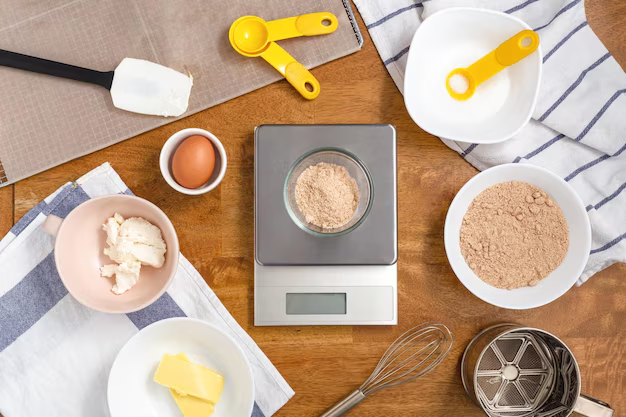How to Measure Your Refrigerator Like a Pro: A Comprehensive Guide
If you've ever embarked on the quest to find the perfect refrigerator, you know that it's more than just choosing a model that looks good and fits your budget. One of the most critical aspects of the buying process is ensuring the unit fits comfortably in your kitchen, and for that, you need precise measurements. Whether you're upgrading or buying your first refrigerator, understanding how to measure properly is key to preventing headaches down the road. Let's explore how you can master this task.
Why Accurate Measurements Matter
Before diving into the how-to's, it's important to grasp why measuring a refrigerator is so crucial. Having accurate dimensions ensures:
- Optimal Fit: Avoid the frustration of purchasing a refrigerator that doesn't fit your space.
- Proper Functionality: A well-fitting refrigerator helps maintain its efficiency and prevents ventilation issues.
- Aesthetic Harmony: Ensure your new fridge complements your kitchen aesthetic rather than disrupting it.
Understanding these points emphasizes the importance of being meticulous with your measurements.
Tools You'll Need
Before you begin, gather the following items to make the process seamless:
- A measuring tape (preferably one that's retractable and sturdy)
- A step stool or ladder if your refrigerator space goes high
- A notepad and pen for jotting down numbers
- A level, to ensure measurements are straight and accurate
- Optional: a friend or family member to help with awkward angles or holding the tape
Pro Tip: Ensure your measuring tape is metric for easier conversion if needed.
Steps to Measure Your Refrigerator
Step 1: Measure the Width
- Place your tape measure at the widest part of the opening where the fridge will sit.
- Extend the tape across to the opposite side ensuring it's straight.
- Note down the measurement.
- Check for obstructions, such as countertops or cabinetry, that might impede opening the refrigerator doors fully.
Remember: Always leave at least an inch gap on either side for proper airflow and easy door opening.
Step 2: Measure the Height
- Start from the floor up to the bottom edge of any overhanging cabinets or moldings.
- Use a step stool if necessary to ensure accuracy at taller heights.
- Record the height on your notepad.
Keep in Mind: Some modern refrigerators are taller; if your kitchen confines height, this measurement is critical.
Step 3: Measure the Depth
- Measure from the wall to the front edge of the countertop, including any overhang.
- Include the door handle in your depth measurement for fridges with protruding handles.
- Note the final dimension.
Step 4: Door Swing Measurement
- Open the refrigerator door the full way.
- Measure the space required for the door swing using the handle as the end point.
- Ensure this area has no obstruction for a smooth opening.
Step 5: Additional Considerations
- Measure all doorways, hallways, and stairs the refrigerator will pass through to ensure it can be moved into the kitchen area.
- Look at the direction the doors swing and consider if it interferes with other kitchen tasks.
Keeping Ventilation Space in Mind
- Refrigerators need space to breathe. As a rule of thumb, provide:
- 1 inch on the sides
- 1 to 2 inches in the back
- ½ inch above
Mockup Installation Check
Before purchasing, consider using a cardboard cutout or masking tape outline on your floor to visualize the refrigerator's presence. This method ensures you foresee potential obstructions or awkward fits and can adjust accordingly.
Related Subtopics to Consider
The Importance of Accessibility in Placement
When choosing where to place your refrigerator, think about its accessibility. A refrigerator should support your cooking flow—placed conveniently near the prep area and far from heat sources like ovens or dishwashers. This strategic placement optimizes efficiency and energy consumption.
Understanding Standard Refrigerator Sizes
Although refrigerators come in various sizes to suit different needs and kitchen designs, there are some generally accepted dimensions:
- Top-Freezer Models: Typically 30 to 33 inches wide, accommodating smaller kitchen spaces.
- Side-by-Side Models: Roughly 30 to 36 inches wide, suitable for wider spaces.
- French Door Models: About 29 to 36 inches wide, requiring sufficient width for door clearance.
- Compact Models: Perfect for tight spaces such as small apartments or office kitchens.
Having a general idea of these sizes can guide your decision before you even begin measuring.
Customizing Your Refrigerator Space
Beyond standard models, some kitchens may require custom appliances tailored to unique layouts. In such cases:
- Work with kitchen designers or appliance specialists.
- Consider modular units to fit specific needs.
- Discuss with contractors about making alterations to your existing kitchen layout.
Seasonal and Lifestyle Considerations
Your measuring and purchasing decisions may vary based on usage:
- If hosting often, consider larger capacity models that might require extra space.
- For frequent movers or renters, compact or modular solutions offer flexibility.
- When upgrading for smart technology, ensure dimensions accurately match the additional tech features.
Quick Measurement Recap 🌟
Here's a handy list of what to ensure when measuring:
- ✅ Width: Has at least 1-inch extra space on each side.
- ✅ Height: Accounts for room at the top without hitting cabinets.
- ✅ Depth: Measures wall to edge, including protruding handles.
- ✅ Ventilation: Sufficient space around for breathing room.
- ✅ Doorways & Space: Pathways are wide enough to accommodate moving.
By following this guide, you'll confidently measure your refrigerator space and select a unit that suits your kitchen beautifully. Remember, precise measurements save time, prevent frustration, and ensure a smooth installation for your new appliance.
